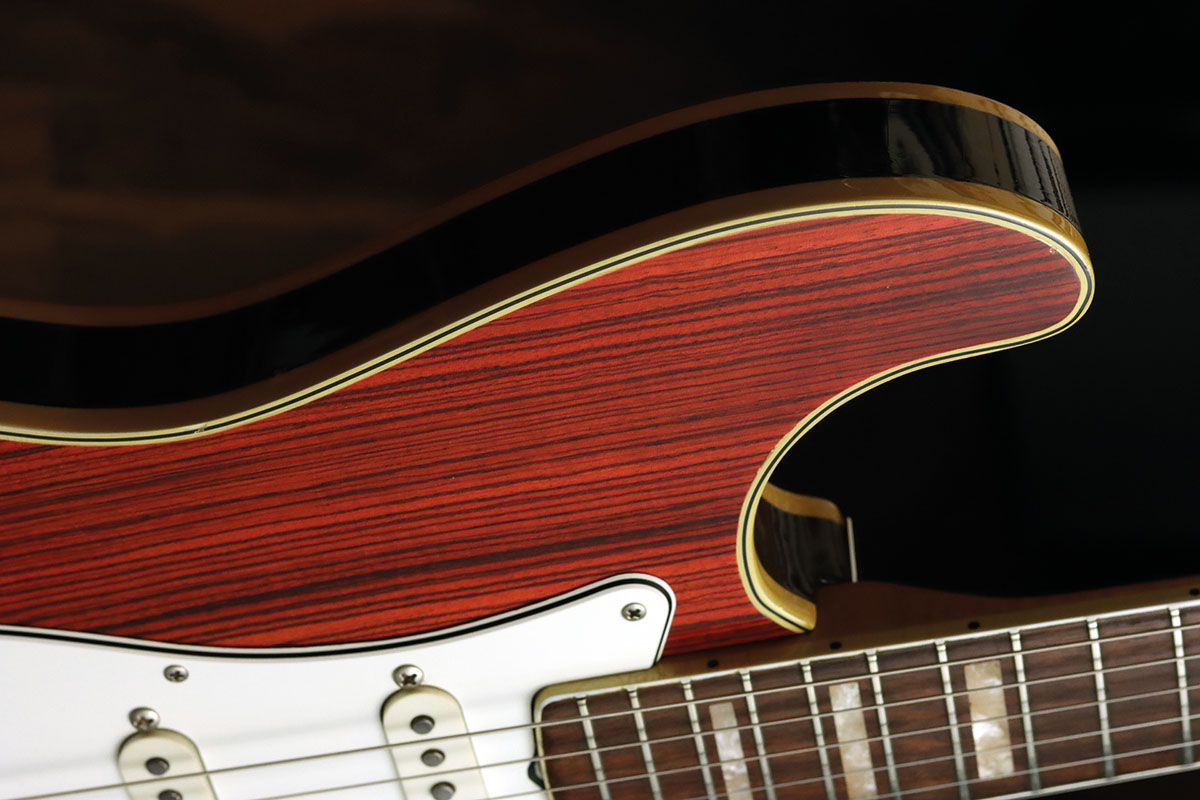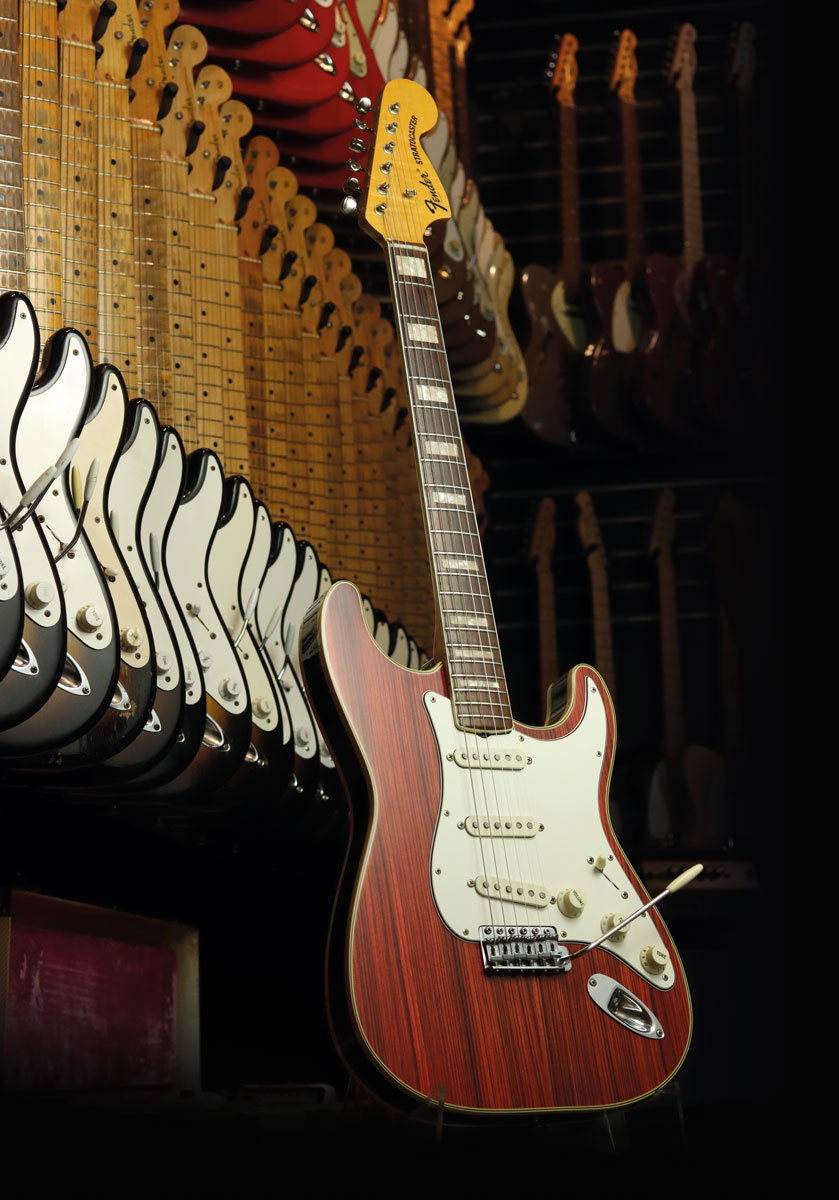“It was one of these totally experimental guitars, a complete one of one”: In 1967, Fender toyed with redesigning its most famous electric guitar – this is the secret history of the semi-hollow Stratocaster prototype
This 1967 semi-hollow Strat was built with zebrawood during a particularly experimental time for Fender – vintage expert David Davidson of Well Strung Guitars tells the story of an R&D oddity

“The CBS era [from 1965] was a hugely experimental time for Fender because they had the financial resources to try a lot of different things. They’d already hired Roger Rossmeisl [in 1962] and Phil Kubicki [in 1964] to come onboard and develop new designs.
“The guitar world was changing quickly and people didn’t necessarily want the same old same old. But the biggest problem they were facing was weight. From my understanding, the Environmental Protection Agency in the United States made it mandatory to use the entire tree, as companies that were harvesting wood were taking the wood furthest from the roots and leaving the rest of the limbless tree to die.
“So that heavier wood down at the base had to be used in the process, and that prompted Fender to find ways of using less of it. Essentially, they wanted to figure out how to reduce the weight of guitars but still make them sound good.
“Obviously, there was a lot of experimentation with Telecasters – including the ‘smuggler’ and Thinline Telecasters – but I’ve also come across experimental models like a semi-hollow Jaguar that was made like a Custom Telecaster with a bound body. But the only commercially successful design out of all those weight-relieved guitars was the Thinline Telecaster. It was the number-one-selling Fender guitar in 1968 and 1969. They sold more Thinline Telecasters than they did any other guitar.
It has a bound rosewood neck with block inlays and a bound top and back with sides – a multi-piece construction, as opposed to a contoured solid body
“I don’t have the history on exactly why this prototype Stratocaster was made, but my feeling is it was put together for a trade show. I think Fender wanted to test the water with it. It has a bound rosewood neck with block inlays and a bound top and back with sides – a multi-piece construction, as opposed to a contoured solid body. There’s a block inside to support the vibrato unit. Being made of zebrawood makes it even more interesting. I think it was one of these totally experimental guitars, a complete one of one.
“This is a cool guitar that highlights a particularly experimental time at Fender, starting in 1967 and continuing up to 1972. Around that time, they were constantly trying new things. Roger Rossmeisl’s colleague Philip Kubicki was also making a lot of decisions about what they were going to make and what they weren’t going to make. He was really heading up a lot of special projects. I was lucky enough to know him when he was making his basses.

“It was really important for me to ask him every question I could about Fender. But most of the time he didn’t really want to talk about it. At that point, he was preoccupied with his own company. But he talked about doing the LTD and Montego electric hollowbodies. I think he really believed in the vision – that Fender should be doing more hollow and semi-hollow electric models. But not everything worked out.
Get The Pick Newsletter
All the latest guitar news, interviews, lessons, reviews, deals and more, direct to your inbox!
“Later on, Fender Japan were revisiting the more experimental designs, and they did issues of this prototype semi-hollow Strat that you see here. They’re reasonable facsimiles. But they’re not exactly the same. From the ’80s onwards, Fender Japan was finding guitars and making copies of unusual instruments.

“They did some limited runs and one-offs as well as the more standard designs. Fender Japan did so much interesting stuff, like the Paisley Red and Blue Flower Telecaster reissues, and the Rosewood Telecaster. But Fender in the USA – at the time – was more interested in moving forward with new things.
“Fender Japan was something of a test market. But I remember selling the Japanese Paisley, Flower and Rosewood Teles when they first came out. I mean, it was a really big deal. People were very excited about them, and they are actually very good guitars.
The jazz purists thought Fender guitars were toys and that’s always the way it was
“If CBS Fender could have figured out that they didn’t have to put a bolt-on neck on everything, I think the LTD and Montego would have been successful. The materials are some of the finest I’ve ever seen and were on par with anyone else’s. And their pickups were fantastic at the time.
“Fender had the ability to do anything. They just couldn’t get past that one cost-cutting measure of the bolt-on neck. I think if they’d have done a set-neck LTD or Montego they would have been successful. I think they would have been able to get some notable players to use them and they would have gained some popularity.
“They spent a tremendous amount of money developing things such as the Micro-Tilt system, but they couldn’t get to the purists. And that’s the problem: the jazz purists thought Fender guitars were toys and that’s always the way it was. Look at the Jazzmaster. Fender was just lucky enough to have a sound you couldn’t produce from a Les Paul. Otherwise, they would have failed.”
- Vintage guitar veteran David Davidson owns Well Strung Guitars in Farmingdale, New York.
Rod Brakes is a music journalist with an expertise in guitars. Having spent many years at the coalface as a guitar dealer and tech, Rod's more recent work as a writer covering artists, industry pros and gear includes contributions for leading publications and websites such as Guitarist, Total Guitar, Guitar World, Guitar Player and MusicRadar in addition to specialist music books, blogs and social media. He is also a lifelong musician.
“What blew me away was that everyone wanted the curly maple top. People were calling, saying, ‘I’ve got to have the bird inlays’”: Paul Reed Smith on raising the Standard 24, finally cracking the noise-free guitar and why John Sykes is a tone hero
“It combines unique aesthetics with modern playability and impressive tone, creating a Firebird unlike any I’ve had the pleasure of playing before”: Gibson Firebird Platypus review





![[from left] George Harrison with his Gretsch Country Gentleman, Norman Harris of Norman's Rare Guitars holds a gold-top Les Paul, John Fogerty with his legendary 1969 Rickenbacker](https://cdn.mos.cms.futurecdn.net/TuH3nuhn9etqjdn5sy4ntW.jpg)





